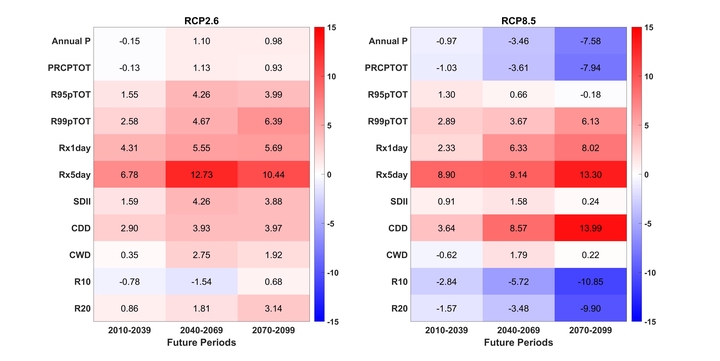Extreme Precipitation

Extreme precipitation events damage infrastructure and property; thus, predicting future precipitation patterns in the context of climate change is important. In this study, precipitation projections from 36 downscaled General Circulation Models (GCMs) under two Representative Concentration Pathway (RCP) scenarios (RCP2.6 and RCP8.5) enabled examination of projected changes in future precipitation for the Clear Creek watershed in Houston, Texas, USA. Precipitation from 1950 to 2099 simulated with GCM were downscaled using the Bias-Correction Spatial Disaggregation method. Ten precipitation indices that represent precipitation amount, precipitation intensity, precipitation duration, and precipitation frequency evaluated how precipitation patterns will likely change. Results show that, at the annual scale, mean precipitation will significantly decrease based on RCP8.5, or remain relatively constant based on RCP2.6. Precipitation intensity and precipitation variability, however, will likely increase. Dry periods will lengthen significantly, whereas the length of wet spells will generally remain unchanged. At the monthly scale, the amount of precipitation, precipitation intensity, precipitation frequency and the length of wet spells will likely increase in September. In contrast, precipitation will likely decrease and dry spells will lengthen in April, May, August, November, and December. This finding illustrates that the intra-annual variability in precipitation will increase. The projected changes in precipitation under RCP8.5 are generally greater compared with RCP2.6. Differences between the scenarios are more pronounced towards the end of the century. Houston has recently experienced substantial precipitation variability, including severe drought and record-breaking precipitation from Hurricane Harvey in 2017. These events are consistent with the long-term GCM projections. Findings from this study can be applied to help manage water resources and enhance adaptability to climate change.